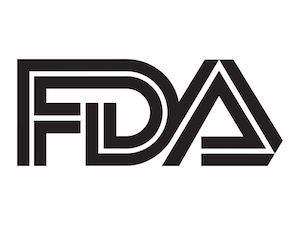5 Key FDA Decisions Expected in the First Quarter of 2023
From a topical gene therapy to a debated heart failure option, a litany of unique agents are anticipated for FDA decision in the new year.

The field of marketed and evidence pharmaceutical options in the US has become robust—in some cases, field-altering—and self-sustaining. But there’s more work to be done.
As US Food and Drug Administration (FDA) Commissioner Robert Califf, MD, recently told HCPLive, there remains a need to increase the pipeline for the following areas of medicine:
- Addiction
- Mental health
- Cardiovascular diseaee
- Pulmonary disease
- Renal disease
- Maternal-fetal health
There also remains a great deal of refining and optimizing—per the FDA avenues of disease indication—to achieve with some of these fields’ latest novel agents. Not all potential has been met for each drug; and not all potential drugs are yet available.
Early 2023, however, may serve as introduction to many promising new drugs and new indications.
Here are 5 key FDA decisions HCPLive is looking out for in the first quarter of 2023.
1. Relugolix, estradiol, and norethindrone acetate (MYFEMBREE), Myovant Sciences: Uterine fibroid pain
PDUFA Date: January 29, 2023
The oral triple-combination therapy was previously approved for the treatment of moderate to severe pain associated with endometriosis in August 2022. A gonadotropin-releasing hormone (GnRH) antagonist therapy, MYFEMBREE represents not only a potential variable drug option for gynecologic condition-associated pain—but added diversity to currently limited fields of care.
Experts including Erica Marsh, MD, MSCI, professor of Obstetrics and Gynecology at University of Michigan Medical School, previously praised the drug class’ recent addition to their armamentarium, citing the important of non-surgical options for eligible patients.
“It’s important that patients to hear about all those options and understand, given their goals and intentions—particularly, do you want to retain the ability to carry a pregnancy in the future, or is it important for you to keep your uterus?” Marsh said.
2. Daprodustat, GlaxoSmithKline: Anemia of chronic kidney disease (CKD)
PDUFA Date: February 1, 2023.
An oral hyperoxia-inducible factor prolyl hydroxylase inhibitor, daprodustat has shown benefit in reducing risk of major adverse cardiovascular events (MACE) as well as in maintaining hemoglobin levels in patients with CKD with anemia who are not undergoing dialysis.
Data published in February 2022 showed the would-be agent is noninferior to darbepoeitin alfa in such outcomes of care, while reporting a similar safety profile.
3. Beremagen geperparvec (B-VEC), Krystal Biotech: Dystrophic epidermolysis bullosa (DEB)
PDUFA Date: February 17, 2023
The topically-applied gene therapy agent made news at the American Academy of Dermatology (AAD) 2022 Annual Meeting last March, when data from the GEM-3 trial showed a significantly greater rate of patients treated with B-VEC achieved complete DEB wound healing than those administered placebo at both 3 and 6 months.
Primary investigator Peter Marinkovich, MD, associate professor of dermatology at Stanford University School of Medicine, told HCPLive the agent may be eventually prescribed and administered by dermatologists, given its simplistic utility compared to other gene therapy options.
“You use it at an outpatient basis, you can just use it in the clinic to treat these patients’ wounds,” he said at the time. “I think it’s really a cutting-edge type of therapy that, if everything goes well, may be approved in a year or so.”
4. Omecamtiv mecarbil, Cytokinetics: Heart failure with reserved ejection fraction (HFrEF)
PDUFA Date: February 28, 2023
The cardiac myosin inhibitor’s FDA application hit a hurdle in December 2022, when the FDA Cardiovascular and Renal Drugs Advisory Committee (CRDAC) voted against the recommendation of the agent’s benefit-risk profile per phase 3 data in an 8-3 vote.
Opinion regarding its future utility in the treatment of HFrEF swayed between experts who believed it may serve an unmet need for a small subset of HF patients, and those who argued its lack of improvement on quality-of-life and cardiovascular death outcomes were concerning.
Prior to the CRDAC vote, experts including Nihar Desai, MD, MPH, associate professor of medicine and Associate Chief of the Section of Cardiovascular Medicine at Yale University School of Medicine, praised the agent’s unique mechanisms of care, and its potentially specific role in treating in-need patients with HF.
“Omecamtiv has a novel mechanism, really getting to the fundamental pathobiological underpinnings of heart failure, and really sensitizing the contractile elements in a way that they actually work better,” Desai said. “So it really does address the fundamental lesion, if you will, in systolic heart failure.”
5. Aflibercept, Regeneron: Diabetic retinopathy (DR)
PDUFA Date: February 28, 2023
The clinical profile for the anti-VEGF therapy across age-related macular degeneration (AMD) and diabetic macular edema (DME) populations has been robustly reported; aflibercept’s utility in treating DR, the rare form of diabetes-related vision loss, may be uniquely impactful.
In 2020 data from the PANORAMA trial, adults with moderately severe-to-severe nonproliferation DR without DME reported reduced disease progression through nearly 2 years of follow-up when treated with aflibercept.
Presenting author W. Lloyd Clark, MD, told HCPLive at the time that aflibercept showed potential to “alter the course of disease” among patients with DR.
“We feel really good about our outcomes,” Clark said. “If we identify patients at the appropriate time and deliver appropriate therapy, our outcomes in all these retinal diseases with anti-VEGF therapy is outstanding.”